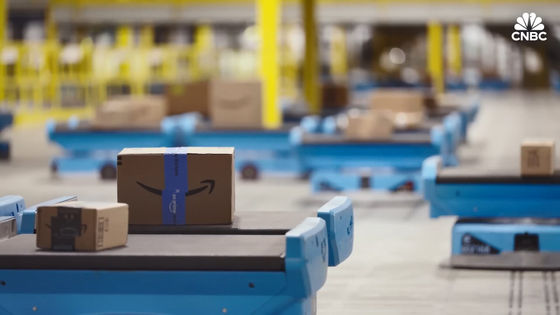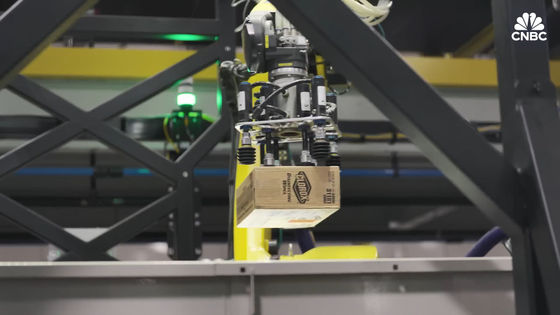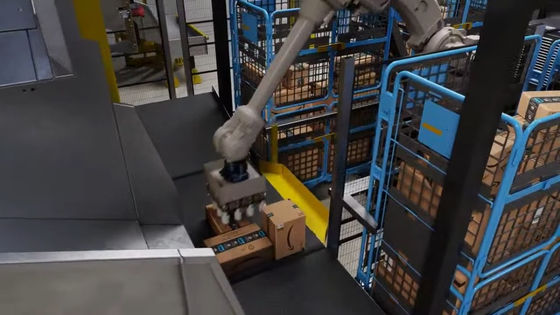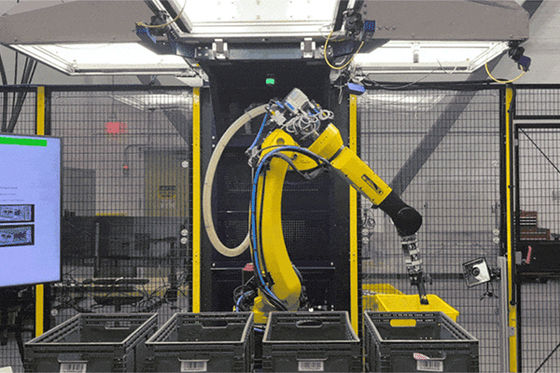Amazon finally deploys its 1 millionth robot in its warehouses, and also introduces a new generative AI-based model 'DeepFleet' to reduce the overall robot travel time by 10%, making it smarter and more efficient

Amazon has announced that it has deployed its 1 millionth robot in its warehouse. In addition, Amazon has also announced a new generative AI-based model called ' DeepFleet ' to operate this large number of robots smartly. Amazon's 1 millionth robot has been delivered to a fulfillment center in Japan.
Amazon deploys over 1 million robots and launches new AI foundation model
Exclusive | Amazon Is on the Cusp of Using More Robots Than Humans in Its Warehouses - WSJ
https://www.wsj.com/tech/amazon-warehouse-robots-automation-942b814f
Amazon tops 1 million robots: Here's what they do – GeekWire
https://www.geekwire.com/2025/amazons-robot-workforce-hits-1-million-heres-what-they-all-do/
Amazon has more than 300 locations around the world, where it uses robots to deliver and manage products. It has been revealed that the number of robots that Amazon has deployed at its locations has finally reached 1 million. According to the Wall Street Journal, this number of '1 million' is almost the same as the number of human workers working at Amazon's locations. In addition, 75% of Amazon's delivery centers around the world are assisted by robots.
In addition, Amazon has also announced 'DeepFleet,' a new generative AI-based model designed to operate large numbers of robots smartly and efficiently. DeepFleet coordinates the movement of robots across the fulfillment network, reducing the overall robot movement time by 10%, making it possible to deliver packages to customers faster and at lower cost, Amazon claimed.
DeepFleet was born as an intelligent traffic management system for cities filled with cars on congested roads. Just as a smart traffic system reduces wait times and provides better routes for drivers, DeepFleet coordinates the movements of robots operating within fulfillment centers to optimize their movements. This reduces robot congestion, creates more efficient routes, and speeds up the fulfillment of customer orders.

DeepFleet is built using a rich and extensive dataset of inventory movements at Amazon's warehouses and AWS tools, including
Robots operated at Amazon's bases began with a robot that moved inventory shelves in warehouses, introduced in 2012. At the time of writing, Amazon operates a wide variety of robots designed to simplify employee work, improve safety, and improve operational efficiency.
Amazon operates the following 11 types of robots at its own locations:
Hercules: The group's longtime flagship robot, this one moves entire shelving units to workers, reducing walking and speeding up item picking.

Pegasus: A wheeled unit with a conveyor top, used to efficiently move packages between fulfillment centers.

Proteus: Amazon's first fully autonomous mobile robot, capable of safely navigating warehouses alongside people.
Amazon announces 'Proteus', a transport robot that can decide its own route and avoid obstacles - GIGAZINE

Vulcan: A robot that uses force sensors and AI to manipulate items by touch, reducing the strain of repetitive tasks.
Amazon unveils tactile warehouse robot 'Vulcan' - GIGAZINE

Digit: A bipedal robot developed by Agility Robotics that is currently being tested for future roles such as unloading trailers.
Sequoia: A robotics system that brings together mobile robots, gantry systems, robotic arms, ergonomic employee workstations, and containerized inventory management.
Amazon introduces new robots 'Sequoia' and 'Digit' to its warehouses, successfully speeding up inventory identification by up to 75% and order processing by up to 25% - GIGAZINE

Robin: A robotic arm that uses vision and suction to sort and transfer packages between systems.

Cardinal: A robotic workstation arm that lifts heavy packages and places them on delivery carts.

Sparrow: An articulated robotic arm that uses suction cups and computer vision to pick up individual items from tote bags.

Titan: A larger, more powerful version of Hercules, used to move bulkier, heavier inventory.

Xanthus: A modular mobile robot platform that can be adapted to different warehouse tasks with interchangeable attachments.
Amazon's Newest Robots Mean New Jobs | Amazon News - YouTube
In addition to Amazon, supermarket chain Company Shop has announced that it has introduced robots and AI into its warehouses , dramatically improving efficiency.
Related Posts:






